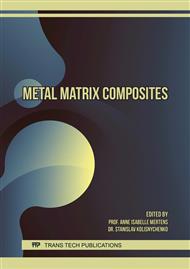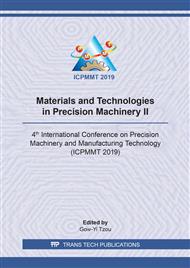p.53
p.59
p.69
p.77
p.85
p.93
p.101
p.107
p.113
Evaluation of Fatigue Behavior of Silicon Carbide Particles Reinforced with Magnesium Alloy Metal Matrix Composites
Abstract:
To evaluate the fatigue behaviors of AZ61 magnesium alloy with different weight percentages (0, 1 and 2) of silicon carbide particles (SiCp) were fabricated through gravity casting method. In addition, stress-controlled low-cycle fatigue test of SiCp reinforced magnesium alloys AZ61 were performed in ambient atmosphere at room temperature using ASTM 606 standard specimens. Fatigue measurement results proved, that the fatigue life of SiCp reinforced metal matrix composites (MMCs) decreased with increasing SiCp content. However, the results of the cyclic ductility decreased owing to the presence of significant amount of SiCp, which induces the brittleness of fatigue properties. This is probably occurring because of increasing the SiCp content in the matrix causes highly localized plastic strain. In addition, a high concentration of stress results around the reinforcements particles regions initiate the crack leading to rapid failure of MMCs. Therefore, the SiCp did not act as a stress reliever and it behaves in a brittle manner for the crack propagation through the particles.
Info:
Periodical:
Pages:
113-118
Citation:
Online since:
February 2020
Price:
Сopyright:
© 2020 Trans Tech Publications Ltd. All Rights Reserved
Share:
Citation:



